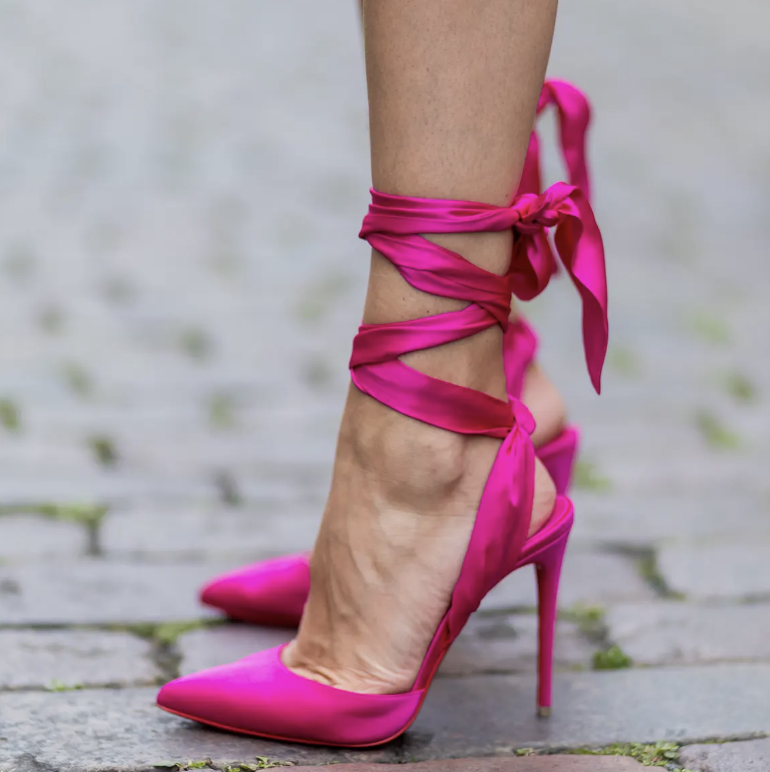Welcome back to Week 3 of our Achilles Resilience series, a journey towards stronger, healthier Achilles tendons. This week, we’re stepping into the captivating world of footwear and plyometrics. Footwear choices have a profound impact on your Achilles health, and understanding these dynamics is crucial for runners and athletes of all levels.
In this blog we will summarise the information from the classroom, we’ll not only explore the factors behind common foot pain related to footwear but also unravel the secrets of plyometric exercises to fortify your Achilles tendon. So, lace up those shoes, and let’s get started!
Choosing the Right Footwear: A Key to Achilles Health
High Tops: Your Achilles’ Shield
Let’s begin with a game-changer: high-top shoes. These aren’t just for basketball players; they can significantly reduce tension on your Achilles tendon. The extra ankle support provides a shield against unnecessary strain. So, if you’ve been considering high-tops, it might be time to give them a try, especially while suffering from achilles pain. They reduce the tension on the tendon by 9.9%.
Proper Shoe Tying: A Small Adjustment, a big impact
Now imagine that the simple act of tying your shoelaces could make a world of difference. Properly securing your shoes with the right lacing technique can help minimize Achilles strain. It’s a small adjustment that can have a big impact on your Achilles health. The above 9.9% reduction in tension goes up to 12.9% with adding in a correct lacing strategy.
Heel Stack vs. Toe Stack: Knowing the Difference
Not all shoes are created equal. Understanding the critical distinctions between heel stack and toe stack shoes is vital. The heel-to-toe drop influences the angle at which your Achilles tendon is stretched. Higher drops may increase strain, while lower drops promote a more neutral position. Choose wisely! Heel stacks of 12mm> are deemed as maximalist, <4mm are minimalistic. Opting for a higher stack whilst suffering achilles pain can help with the pain.

Carbon-Plated Shoes: A Biomechanical Marvel
Now, let’s delve into a modern marvel: carbon-plated shoes. These technological wonders have revolutionized running, but they also have significant biomechanical effects. They provide an enhanced push-off and can alter the mechanics of your foot, large toe, and ankle. While they offer speed and performance benefits, it’s essential to balance their use to prevent overuse injuries. Shoe science is always developing, but unfortunately it isn’t always the athlete health that is paramount but faster times. Be aware when changing footwear and newer symptoms around the feet.
The Problem with Flip Flops
Flip flops offer minimal support and cushioning compared to traditional footwear. When you wear them, your Achilles tendon is exposed to greater stress and strain with every step. Here’s how flip flops can negatively impact your Achilles health:
- Lack of Arch Support: Flip flops typically lack arch support, which means your foot has to work harder to maintain proper alignment. This places additional stress on the Achilles tendon.
- Overuse and Overstretching: Prolonged use of flip flops can lead to overstretching of the Achilles tendon. The constant need to grip the sandals with your toes can strain the tendon over time.
- Altered Gait: Wearing flip flops can alter your natural walking or running gait. This change in biomechanics can increase the load on your Achilles tendon, potentially leading to pain and discomfort.

The Strain of High Heels
High heels alter the natural alignment of your feet and force your Achilles tendon into a stretched position. This constant elongation can lead to several issues that contribute to Achilles pain and discomfort:
- Increased Tension: The angle created by high heels increases the tension on your Achilles tendon. Over time, this can result in strain and even microtears within the tendon.
- Shortened Calf Muscles: Regularly wearing high heels can lead to the shortening of your calf muscles. This, in turn, places additional stress on your Achilles as it attempts to accommodate this altered muscle length.
- Reduced Shock Absorption: High heels offer minimal shock absorption compared to flat shoes or sneakers. This lack of cushioning means that your Achilles tendon absorbs more of the impact from each step, potentially leading to discomfort or pain.

Plyometrics for Achilles Resilience
Plyometric exercises are the secret sauce to building Achilles resilience. These dynamic movements, like the calf bridge, double-legged jump, switch-ups, and the double hinge floating heel, are designed to challenge your muscles and boost agility, coordination, and overall running performance.
Week 3 of the Achilles Resilience series has unveiled the critical relationship between footwear choices, proper shoe tying, and the health of your Achilles tendon. High-top shoes and lacing techniques can be your Achilles’ best friends, while understanding the heel stack vs. toe stack can make your footwear choices smarter.
Don’t forget to consider the biomechanical impact of carbon-plated shoes. While they offer significant advantages, it’s crucial to use them wisely.
And let’s not overlook the power of plyometrics. These exercises are your key to building Achilles resilience and elevating your overall athletic performance.
As you continue your journey towards Achilles health and resilience, remember that knowledge is your greatest ally. Stay tuned for more insights and practical tips in the coming weeks as we wrap up the Achilles Resilience series. Until then, keep lacing up those shoes and strengthening your Achilles for a lifetime of pain-free running! 🏃♀️👟💪
Thanks for Reading
James
